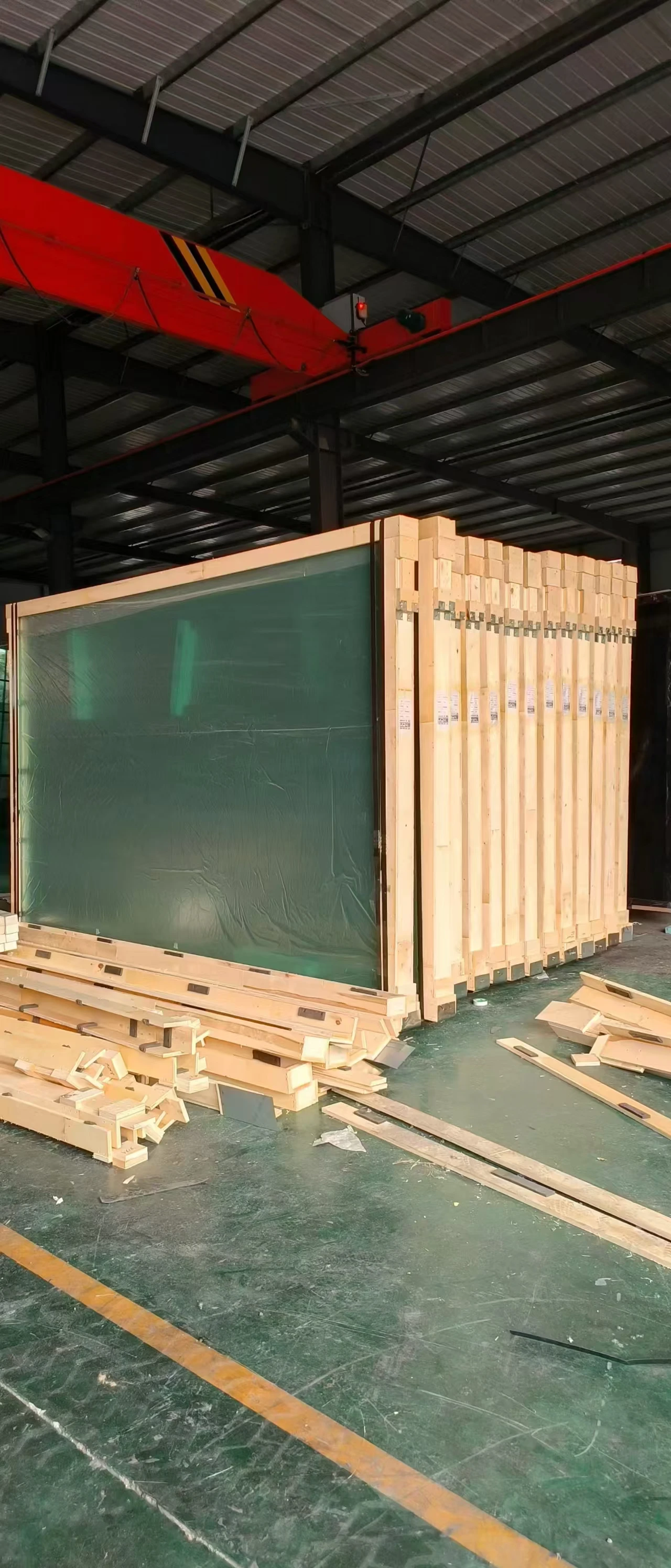Understanding Architectural Curtain Walls A Blend of Aesthetics and Functionality
Architectural curtain walls are a prominent feature in modern building design, characterized by their ability to enhance the aesthetic appeal of structures while providing essential protective functions. These non-structural cladding systems are typically made of lightweight materials, which allow for a high degree of design flexibility while ensuring structural integrity. As urban landscapes evolve and the demand for innovative building solutions increases, understanding the significance and functionality of curtain walls becomes essential for architects, builders, and developers alike.
Definition and Composition
A curtain wall is essentially the outer skin of a building that is not meant to bear any of the building's loads. Instead, it acts as a shield against environmental factors such as wind, rain, and thermal effects. Common materials used in the construction of curtain walls include glass, aluminum, steel, and insulated panels. The glass facades, for instance, are popular for their sleek appearance and ability to provide natural light, thereby reducing the need for artificial lighting during the day.
The design and composition of curtain walls can vary greatly. They can include fixed panels, operable windows, and even integrated shading devices to enhance energy efficiency. The flexibility in design allows architects to play with various textures, colors, and forms, contributing to a building’s overall identity.
Benefits of Curtain Walls
1. Aesthetic Versatility One of the primary advantages of curtain walls is their ability to transform a building's facade into a striking visual element. The use of glass combined with various framing solutions can create stunning reflections and transparency that contribute to the modern aesthetic.
2. Energy Efficiency Modern curtain walls can be designed to include insulated glass units and high-performance materials that help in minimizing energy consumption. These walls can be equipped with thermal breaks, low-emissivity (low-e) coatings, and even dynamic shading systems that adjust based on sunlight exposure, enhancing a building’s thermal performance.
architectural curtain wall
3. Weather Resistance Curtain walls are engineered to handle extreme weather conditions. They provide a barrier against rain, snow, wind, and other environmental challenges, helping to protect the building’s internal structure from moisture damage and thermal fluctuations.
4. Lightweight Structure Since curtain walls are non-load-bearing, they can be made from lightweight materials, allowing for larger windows and more open spaces. This characteristic not only reduces the structural load on the building frame but also enables taller designs with expansive views.
Challenges and Considerations
Despite the numerous benefits, curtain walls come with their own set of challenges. One major concern is the potential for water infiltration, which can lead to mold and structural damage if not properly managed. Designers must ensure appropriate drainage systems and seals are integrated into the curtain wall design.
Furthermore, the initial cost of curtain wall systems can be higher than traditional wall materials. However, when considering the long-term savings associated with energy efficiency and maintenance, many developers find that the investment is well worth it.
The Future of Curtain Walls
As technology continues to advance, the future of architectural curtain walls looks promising. Innovations in materials, such as smart glass and sustainable composites, are being developed to further enhance their performance and usability. The push towards sustainable architecture also demands that curtain wall systems contribute positively to a building’s overall energy goals, leading to new solutions like photovoltaic glazing.
In conclusion, architectural curtain walls represent an intersection of aesthetic appeal and functional design. As urban environments continue to grow and evolve, these structures will play a vital role in shaping the skylines of tomorrow while addressing the practical needs of energy efficiency and environmental resilience. Understanding and leveraging the advantages of curtain walls will remain crucial for architects and builders aiming to create modern, innovative, and sustainable buildings.
 Afrikaans
Afrikaans  Albanian
Albanian  Amharic
Amharic  Arabic
Arabic  Armenian
Armenian  Azerbaijani
Azerbaijani  Basque
Basque  Belarusian
Belarusian  Bengali
Bengali  Bosnian
Bosnian  Bulgarian
Bulgarian  Catalan
Catalan  Cebuano
Cebuano  Corsican
Corsican  Croatian
Croatian  Czech
Czech  Danish
Danish  Dutch
Dutch  English
English  Esperanto
Esperanto  Estonian
Estonian  Finnish
Finnish  French
French  Frisian
Frisian  Galician
Galician  Georgian
Georgian  German
German  Greek
Greek  Gujarati
Gujarati  Haitian Creole
Haitian Creole  hausa
hausa  hawaiian
hawaiian  Hebrew
Hebrew  Hindi
Hindi  Miao
Miao  Hungarian
Hungarian  Icelandic
Icelandic  igbo
igbo  Indonesian
Indonesian  irish
irish  Italian
Italian  Japanese
Japanese  Javanese
Javanese  Kannada
Kannada  kazakh
kazakh  Khmer
Khmer  Rwandese
Rwandese  Korean
Korean  Kurdish
Kurdish  Kyrgyz
Kyrgyz  Lao
Lao  Latin
Latin  Latvian
Latvian  Lithuanian
Lithuanian  Luxembourgish
Luxembourgish  Macedonian
Macedonian  Malgashi
Malgashi  Malay
Malay  Malayalam
Malayalam  Maltese
Maltese  Maori
Maori  Marathi
Marathi  Mongolian
Mongolian  Myanmar
Myanmar  Nepali
Nepali  Norwegian
Norwegian  Norwegian
Norwegian  Occitan
Occitan  Pashto
Pashto  Persian
Persian  Polish
Polish  Portuguese
Portuguese  Punjabi
Punjabi  Romanian
Romanian  Russian
Russian  Samoan
Samoan  Scottish Gaelic
Scottish Gaelic  Serbian
Serbian  Sesotho
Sesotho  Shona
Shona  Sindhi
Sindhi  Sinhala
Sinhala  Slovak
Slovak  Slovenian
Slovenian  Somali
Somali  Spanish
Spanish  Sundanese
Sundanese  Swahili
Swahili  Swedish
Swedish  Tagalog
Tagalog  Tajik
Tajik  Tamil
Tamil  Tatar
Tatar  Telugu
Telugu  Thai
Thai  Turkish
Turkish  Turkmen
Turkmen  Ukrainian
Ukrainian  Urdu
Urdu  Uighur
Uighur  Uzbek
Uzbek  Vietnamese
Vietnamese  Welsh
Welsh  Bantu
Bantu  Yiddish
Yiddish  Yoruba
Yoruba  Zulu
Zulu 

